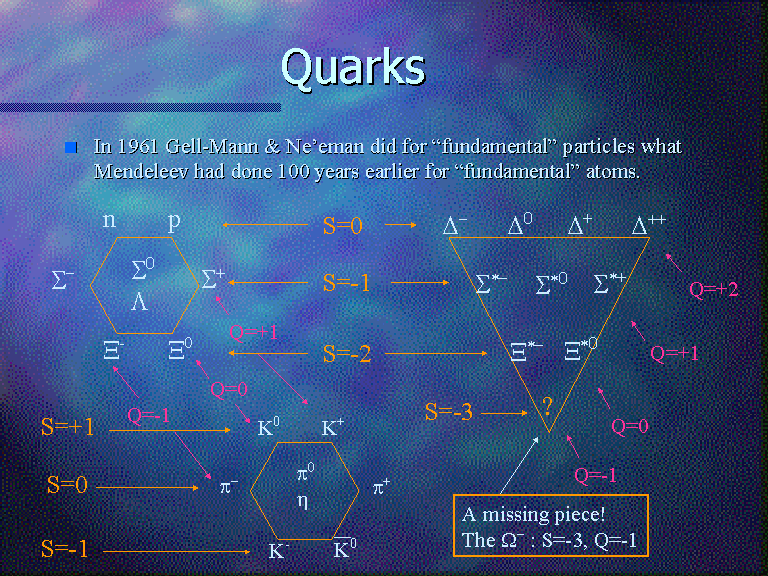Quarks serve as the fundamental building blocks of matter, swirling within the subatomic depths of protons and neutrons, akin to the vibrant colors of paint within an artist’s palette. Their discovery has profoundly altered our understanding of particle physics and the very fabric of reality. Yet a lingering question persists within the scientific community and beyond: Are quarks merely theoretical constructs, or do we have conclusive experimental evidence supporting their existence? This exploration delves into the intricacies of quarks, presenting evidence that transcends the realm of speculation and firmly plants them in the annals of established science.
1. The Birth of Quark Theory
The quark model was proposed independently by Murray Gell-Mann and George Zweig in 1964 as a means to categorize hadrons—the mesons and baryons that interact via the strong force. By likening quarks to the vibrant hues of a prism, which combine to form the complex spectrum of visible light, Gell-Mann and Zweig presented a theory that simplified the overwhelming variety of particles observed in high-energy physics. Quarks are theorized to exist in three “colors”: red, green, and blue, with the ultimate requirement that observable particles be “color-neutral” or white. This imaginative framework laid the groundwork for what would become the Standard Model of particle physics.
2. Experimental Challenges and Breakthroughs
Initially, the existence of quarks was shadowed by the challenge of direct observation. Quarks cannot exist independently due to a phenomenon known as confinement, which operates in quantum chromodynamics (QCD). They are perpetually bound within larger particles, making their direct detection elusive. Yet, experimental physicists have devised ingenious methods to probe the very fabric of matter through high-energy collisions, unveiling the substructure of protons and neutrons.
The most pivotal evidence emerged from deep inelastic scattering experiments conducted at the Stanford Linear Accelerator Center (SLAC) in the late 1960s. When high-energy electrons were directed at protons, an unexpected scattering distribution revealed that protons possessed internal constituents. The subsequent analysis suggested these constituents were indeed quarks, each carrying a fraction of the proton’s momentum. This marked a watershed moment in confirming the existence of quarks, transforming them from mere theoretical entities to tangible components of matter.
3. The Quark-Gluon Plasma: Unraveling New Frontiers
Further evidence supporting quarks manifests in the study of extreme conditions, such as those found in heavy-ion collisions at facilities like the Large Hadron Collider (LHC) and the Relativistic Heavy Ion Collider (RHIC). Scientists have strived to recreate conditions reminiscent of the early universe, moments after the Big Bang, when quarks and gluons roamed freely in a state of matter known as the quark-gluon plasma. The observation of jet quenching—a suppression of high-energy particle jets—indicates the presence of this phase, providing significant corroboration for the quark model. The behavior of this plasma is tantamount to a symphony of elementary particles interacting under the influence of fundamental forces, a dance choreographed by the dynamics of QCD.
4. The Cosmic Connection: Astrophysical Implications
Quarks do not reside solely in Earthbound laboratories; they also echo through the cosmos. The study of neutron stars, incredibly dense remnants of supernova explosions, reveals a possible existence of “quark stars.” In this theoretical construct, extreme pressures may cause neutrons to dissolve into their constituent quarks, forming a novel state of matter. The gravitational waves detected from neutron star mergers provide an avenue for exploring these exotic phases, illustrating how quark theory interlaces with cosmic phenomena, further validating its significance as a cornerstone of modern physics.
5. Refining the Quark Model: Flavor and Beyond
Quarks come in six “flavors”: up, down, charm, strange, top, and bottom, each with unique properties that contribute to the diversity of matter. The Standard Model encapsulates these flavors, yet it also exposes limitations and enigmas—amplifying the quest for a deeper understanding. Recent anomalies, such as measurements concerning the proton’s charge radius and research into charm quark interactions, beckon physicists to hone and refine the quark model. Such explorations not only validate the existence of quarks but also open portals to new physics beyond the Standard Model, inviting a re-examination of the fundamental constituents of the universe.
6. The Quest for Unification
The narrative surrounding quarks interweaves with the broader quest for unification within physics. Theoreticians endeavor to integrate the forces of nature—gravitational, electromagnetic, weak, and strong—into a single coherent framework. String theory, for instance, posits that fundamental particles, including quarks, may be manifestations of one-dimensional strings vibrationally oscillating through spacetime. While still largely theoretical, such frameworks reaffirm the necessity of quarks as central players in the universe’s grand story, emanating from a consistent and interconnected cosmos.
Conclusion: Quarks as the Fabric of Reality
In examining the bedrock of particle physics, quarks emerge not as mere fictions, but rather as concrete entities supported by rigorous experimental evidence. From deep inelastic scattering to the phenomenal observations of quark-gluon plasma, the scientific community has woven a tapestry of validation that firmly places quarks within the domain of reality. As researchers continue to explore the cosmos and the minutiae of matter, quarks will undoubtedly retain their status as integral components of our understanding of the universe. The interplay between theory and evidence showcases a vibrant dialogue that encapsulates the heart of scientific inquiry—a relentless pursuit to fathom the unfathomable and illuminate the shadowy realms of the atomic world. Through their dance within the depths of matter, quarks beckon humanity to explore, understand, and embrace the complexities of existence itself.












